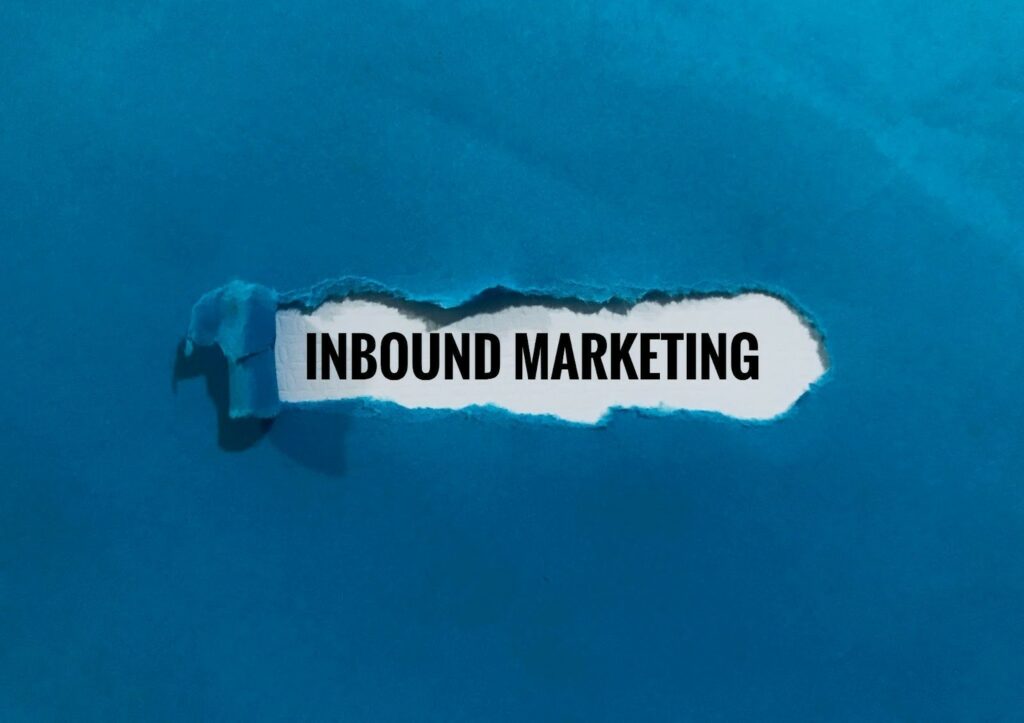Marketers, imagine a world where you initiate the sales process by directly targeting your most suitable, highest-value accounts. No more wasted efforts on marketing to unqualified leads that don’t align with your business. Instead, you can promptly transition to engaging and delighting your target accounts with this comprehensive guide on Account Based Marketing.
Creases on your forehead might have eased a bit reading this thinking that is it possible? Well, yes it is.
In this blog post, we will guide you through the process of how this can be achieved and also share examples of companies that have achieved success by using these strategies.
Let’s get in.
What is Account Based Marketing?

Account-based marketing (ABM) is a strategic methodology prioritizing high-value accounts within a market or business. By creating personalized buying experiences, ABM enhances customer acquisition, fosters relationship-building, and fuels business growth.
ABM allows your business to engage with high-value accounts on a personalized level, treating them as individual markets.
Through personalized buyer journeys and tailored communications, content, and campaigns, ABM delivers greater ROI and fosters increased customer loyalty.
As per HubSpot, 70% of B2B marketers leveraged ABM in 2021 compared to 55% a year before.
Let’s move further and understand why Account-based marketing is important for your business.
What is the Importance of Account Based Marketing?

Let’s explore why ABM has surged in importance for Chief marketing officers and marketing leaders in the past few years.
- Offers a Personalized Approach
ABM offers marketers the chance to craft personalized messages tailored to specific groups, rather than using generic messaging for a wide audience. When focusing on a specific account, dedicating time and effort to crafting pertinent content that benefits your potential customers is crucial.
Thus, with ABM, you can deliver a more tailored experience to your prospects—increasing the likelihood of them making a purchase and spending more money. It’s a win-win situation!
- Aligns Marketing and Sales Team
Aligning marketing and sales is crucial for business success, but it’s easier said than done.
ABM can play a key role in bringing marketing and sales together by setting shared goals and objectives.
This helps ensure everyone is working towards the same targets when it comes to reaching important accounts and creating an effective strategy.
Moreover, ABM facilitates better collaboration between both teams by offering a centralized platform for communication and feedback.
- Improves Resource Allocation
ABM doesn’t just ensure you connect with the right individuals; it also aids in reducing unproductive leads. Conventional marketing often wastes resources by reaching out to individuals unlikely to become customers.
Efficient resource allocation is ensured by account-based marketing, directing efforts where success is most probable. Furthermore, it maintains the engagement of the marketing team even during slower periods of activity within the broader audience.x
- Streamlines Your Sales Cycle
Traditional sales methods such as cold calling and emailing often consume valuable time and yield low efficiency. Much effort is spent in targeting individuals who may not have any interest in the products you offer.
In contrast, ABM allows you to concentrate your efforts on particular companies that are more inclined to engage with your product or service. This streamlines the process of creating customized messages and campaigns, leading to better results.
Furthermore, ABM enables connections with key decision-makers in each targeted company, making deal closure more efficient and shortening the sales cycle.
Moving further, let’s take a closer look at another significant strategy: Inbound marketing.
What is Inbound Marketing?

Inbound marketing is a digital marketing approach aimed at attracting customers by providing valuable content and experiences that resonate with them. Unlike traditional advertising, it emphasizes content creation and information sharing to engage audiences.
This method creates an interactive environment for customers, offering educational tools and communication opportunities alongside brand products. To kickstart an inbound marketing campaign, it’s essential to map out the customer journey and plan content accordingly.
Organizing a content calendar and promotional strategy is key to tracking campaign success and maintaining creativity.
While inbound marketing may not always directly generate leads or sales, it plays a vital role in raising brand awareness, which is crucial for overall digital marketing efforts.
Moving ahead, let’s delve into how Account-based marketing and Inbound Marketing intertwine and work together to achieve your desired outcomes.
Account Based Marketing and Inbound Marketing
Like iconic pairs such as coffee and cream or Sherlock Holmes and Dr. Watson, the fusion of account-based marketing (ABM) and inbound marketing forms a potent alliance for your business.
You might be wondering, “How does this partnership work?” Let’s shed some light on it.
- Inbound marketing plays a role in attracting suitable customers, while account-based marketing utilizes both marketing and sales to speed up the flywheel process and provide a valuable customer experience.
- ABM focuses on highly targeted strategies, whereas inbound marketing attracts customers through valuable content and experiences.
- Inbound marketing sets the stage for a robust ABM strategy by enabling efficient resource allocation to high-value accounts. By incorporating both approaches, you can appeal to a wider range of prospects and deliver exceptional customer experiences.
- In essence, ABM accelerates the flywheel initiated by inbound marketing, ensuring not only attraction but also the acquisition and satisfaction of your target accounts.
- With an integrated approach, your content serves a dual function, addressing the needs of both ABM and inbound strategies.
After digging into the ins and outs of how inbound marketing and account-based marketing are interlinked with each other, it’s time to turn our gaze toward the advantages of account-based marketing.
What are the Advantages of Account Based Marketing?

Numerous advantages come with account-based marketing. We’ve gathered a compilation of outcomes that bring positive impacts to businesses of all kinds.
- Cultivates and Maintains Customer Relationships
The principle of prioritizing quality over quantity is highly relevant in account-based marketing. This approach necessitates a significant investment of time and resources into engaging and satisfying a carefully selected group of high-value accounts.
Rather than hastily pursuing deals with less qualified leads that may not align well with your company in the long term, account-based marketing focuses on cultivating strong relationships with these targeted accounts.
By dedicating effort to build trusting relationships with these accounts, you not only retain valuable customers for extended periods but also positively impact your bottom line. Considering that the cost of acquiring new customers is typically higher than retaining existing ones, this approach offers financial benefits.
Furthermore, providing personalized, thoughtful, and consistent customer experiences fosters loyalty over time. Loyal customers, in turn, serve as effective advocates, promoters, and marketers for your brand.
They contribute to expanding your business within their networks—such as partners or customers—through referrals, word-of-mouth marketing, testimonials, and more.
- Facilitates Prompt-Decision Making
Normally, the decision-making process often extends over a prolonged period. However, ABM offers a distinct advantage by expediting this process. After successfully establishing and nurturing relationships with identified key decision-makers within the company, you gain a more direct pathway in the decision-making journey.
Offering personalized content at key moments and on preferred platforms enables you to expertly guide your prospects through their buyer’s journey.
As you approach the decision-making phase, the aim is to have established trust with your target account, prompting them to become customers willingly.
- Outcomes are Measurable
The effectiveness of Account-Based Marketing (ABM) can be measured through various key performance indicators (KPIs) such as account engagement, pipeline velocity, deal size, customer retention, and revenue impact.
For instance, a company implementing ABM might track the level of interaction with target accounts, the speed at which leads progress through the sales pipeline, the average value of closed deals, customer retention rates, and the direct revenue generated from ABM campaigns.
These measurable outcomes demonstrate ABM’s ability to drive engagement, accelerate sales cycles, increase deal sizes, improve customer retention, and ultimately impact revenue growth.
- Bridges the Gap Between Market Strategies and Revenue Generation
In account-based marketing, marketers work closely with the sales team to match their goals.
For example, if the sales team is aiming to upsell or cross-sell to existing accounts, both teams would agree on which accounts to target for these additional sales opportunities and identify the key contacts within those accounts.
Using the chosen ABM approach, whether it’s one-to-many or one-to-few, tailored strategies will be crafted for these identified accounts, featuring personalized messaging and relevant content. When new customers are acquired as a result, the revenue generated can be directly linked to the account-based marketing efforts.
This attribution is feasible because there’s an agreement between sales and marketing regarding the target account list before the campaign begins. As a result, the ABM strategy and associated marketing endeavors are intentionally designed to drive revenue.
- Ensure Uniform Customer Experiences Across All Interactions
ABM aims to meet or surpass buyer expectations. By consistently providing products or services that exceed expectations, you can guarantee customers consistently have valuable experiences.
It’s essential to sustain long-term satisfaction with your accounts. Each account should feel uniquely prioritized with your attention and strategies.
- Optimize Your Visibility, Reputation, and Significance.
As ABM concentrates on individual accounts, it enhances your relevance with those high-value accounts. By personalizing everything, you’re optimizing your presence in the domain.
A valuable ABM strategy customizes content and interactions to demonstrate how your products or services precisely address an account’s challenges. ABM enables you to position your business as the most ideal and relevant option for your target accounts.
- Focused Marketing Efforts
ABM focuses your marketing efforts on important accounts to increase revenue. With this concentrated approach, these actions streamline your most precious assets: time and finances.
By aligning your sales and marketing endeavors, you can direct your marketing team to collaborate closely with sales in targeting and crafting content for key accounts. This helps create a strong line of communication with the sales team.
- Higher ROI
ABM is accurate, focused, customized, and measurable, offering the best ROI among B2B marketing methods with reduced waste and risk. This approach facilitates better alignment between sales and marketing, ensuring consistent growth for accounts.
Now that you’re in the know about account-based marketing and its impact on your company’s growth potential, let’s dive into the practical steps for making it a reality.
How to Implement an Account Based Marketing Strategy?

By adhering to the following steps, you can ensure that you commence your ABM journey on the right track.
Step-1: Determine Your Target Audience.
Understanding and pinpointing your target audience is crucial for the success of your account-based marketing (ABM) campaigns. Before crafting your campaigns, focus on identifying two key elements:
- Ideal Account Profile (IAP)
When identifying promising prospects for your business, consider both static signals like sales figures and number of employees, as well as dynamic signals such as recent participation in events, fundraising, or changes within the company. Platforms like LinkedIn Sales Navigator, the company’s LinkedIn page, and Google News can help you gather this information effectively.
- Ideal Customer Profile (ICP)
This involves defining the parameters and decision-making authority within your prospect’s organization. Similar to IAP take into account both “static” signals such as job title, years of career experience, company, and current position, as well as “dynamic” signals like recent promotions, LinkedIn activity, job descriptions, and interests.
By prioritizing these factors, you can efficiently customize your ABM strategies to connect with the appropriate companies and individuals, thereby enhancing the likelihood of success in your marketing initiatives.
Step-2: Conduct Your Research
Regardless of the proficiency of your research team, some aspects require intuition and experience. In account-based marketing, involving stakeholders outside the two departments is crucial.
Conduct in-depth research on the target company, including its structure and key decision-makers. The goal isn’t just to create buyer personas but to understand how to best present your product to meet the target business’s needs.
Step-3: Craft Your Content
The next vital stage in your account based marketing strategy entails developing tailored marketing campaigns for individual accounts. This process includes crafting personalized content specific to each account, utilizing the insights obtained during the research phase.
Utilizing the data acquired earlier, you can devise creative assets that truly resonate with your target audience. Personalized and relevant content is paramount for success in account based marketing because it increases the likelihood of converting prospects into customers.
Among the various effective ABM tactics, personalized content consistently outperforms others and should be a cornerstone of your plan.
You might develop content specific to particular industries, individual accounts, or even roles within those accounts. However, it’s essential to maintain a balance and avoid being overly intrusive.
A highly effective ABM strategy involves engaging target accounts with educational and informative content rather than overt sales pitches. Offer a range of valuable resources such as whitepapers, webinars, workbooks, and infographics.
Step-4: Select Your Channel
After understanding the workings of your target organization, it’s crucial to tailor content to meet its specific needs, keeping in mind that it’s intended for the entire organization, not just certain employees.
For example, rather than discussing how a new training program benefits individual departments, emphasize its positive impact on the company as a whole.
If you have existing content from past inbound marketing strategies, consider revamping it to communicate to the organization as a whole rather than individuals. Simply request your marketing designers to adapt the content accordingly.
Step-5: Execute Your Strategy
As you move forward, it’s essential to avoid overwhelming your target audience with excessive content bombardment across various channels. Instead, focus on building meaningful relationships by delivering valuable and targeted messages.
Additionally, while account based marketing provides remarkable remarketing opportunities, it’s crucial to maintain moderation. Rather than repeatedly sending the same message to individuals, diversify your approach by creating a library of insightful materials that offer genuine value and engage your audience creatively.
Step-6: Review the Performance of Your Campaign
As you wrap up your campaign, it’s imperative to gauge its success. Understanding which aspects are performing well and which need improvement is key to maintaining a winning ABM strategy.
To evaluate your campaign’s effectiveness, consider questions like:
- Did you reach out to the right people within each account?
- How many influencers were engaged during the campaign?
Furthermore, assess stage progression metrics such as:
- Did you successfully transition accounts from one stage to another, such as onboarding new accounts or upselling to existing ones?
- Are engagement levels satisfactory across targeted accounts?
- Are there any notable trends or patterns in customer interactions that indicate success or areas for improvement?
By examining these metrics comprehensively, you can refine your ABM strategy for future success.
Once you’ve established your own account based marketing framework, you’ll begin experiencing the same level of success that other B2B marketers have achieved.
Let’s explore some inspiring examples of companies that have effectively integrated AI into their ABM strategies.
Examples of Companies Using ABM Strategies
Account-based marketing has become a buzzword in recent years. Companies with mature ABM strategies credit 79% of opportunities and 73% of total revenue to ABM efforts.
Let’s see of the examples that have successfully implemented Account based marketing strategies.
- DocuSign
DocuSign exemplifies effective account based marketing (ABM) by developing individualized websites tailored to six specific industries it sought to engage. Utilizing display ads, DocuSign directed its target contacts to these industry-specific websites.
With precise knowledge of the visitors’ identities, the company populated these sites with highly personalized content, resulting in significant boosts in conversions.
This strategic approach underscores the power of ABM in delivering tailored experiences that resonate with target audiences and drive successful outcomes for the company.
- GumGum
GumGum, a contextual intelligence company, aimed to secure an account with T-Mobile. In pursuit of this goal, the team devised a unique strategy: they crafted a custom superhero comic book starring the CEO of T-Mobile as the protagonist. This comic book quickly gained traction and went viral, ultimately leading to the successful acquisition of the T-Mobile account by GumGum.
- Microsoft
While Microsoft enjoys a strong presence as a leading tech brand with dedicated customers, they continues to utilize their Instagram platform to forge emotional bonds with their intended audience.
In a recent initiative, Microsoft teamed up with NBA player Donovan Mitchell to educate younger generations about technology and ignite their curiosity about innovative gadgets.
By collaborating with NBA players, Microsoft effectively cultivates emotional connections with its target audience: Teens.
- Personify
Personify exemplifies successful account based marketing (ABM) by implementing a comprehensive strategy tailored to their Constituent Management & Engagement (CME) platform.
They initiated the program by identifying their Ideal Customer Profile (ICP) and top accounts, followed by segmenting target markets and personas.
Launching personalized ad campaigns and intensifying brand awareness efforts led to significant results, including a remarkable 39-fold increase in website engagement after 11 months.
Today, digital ad display channels offer extensive customization options to effectively target ideal clients based on various demographics.
- Calendly
A highly effective approach to keep potential accounts engaged in your sales pipeline is by providing them with valuable information.
While people may occasionally seek insights into your product’s benefits and why they should consider it, at times, they simply require straightforward information to aid their decision-making process.
This strategy, akin to Calendly’s approach, involves hosting virtual events to educate potential accounts on scheduling and appointments. Additionally, email invitations offering complimentary access to their software are extended to recipients.
Through one-on-one interactions during these events, Calendly successfully transitions free accounts into paid ones, highlighting the effectiveness of fostering personal relationships with potential accounts as a marketing strategy.
Summing Up
On a parting note, we would like to give you a small tip: Don’t let humans get lost in the data.
Implication of account based marketing strategies isn’t one size fits for all approach. While you can take inspiration from these account based marketing examples, avoid duplicating them outright.
Success may have been achieved with these strategies, but replicating them doesn’t guarantee identical outcomes for your own plans. Hence, it’s crucial to conduct thorough market research and tailor your ABM services accordingly.



